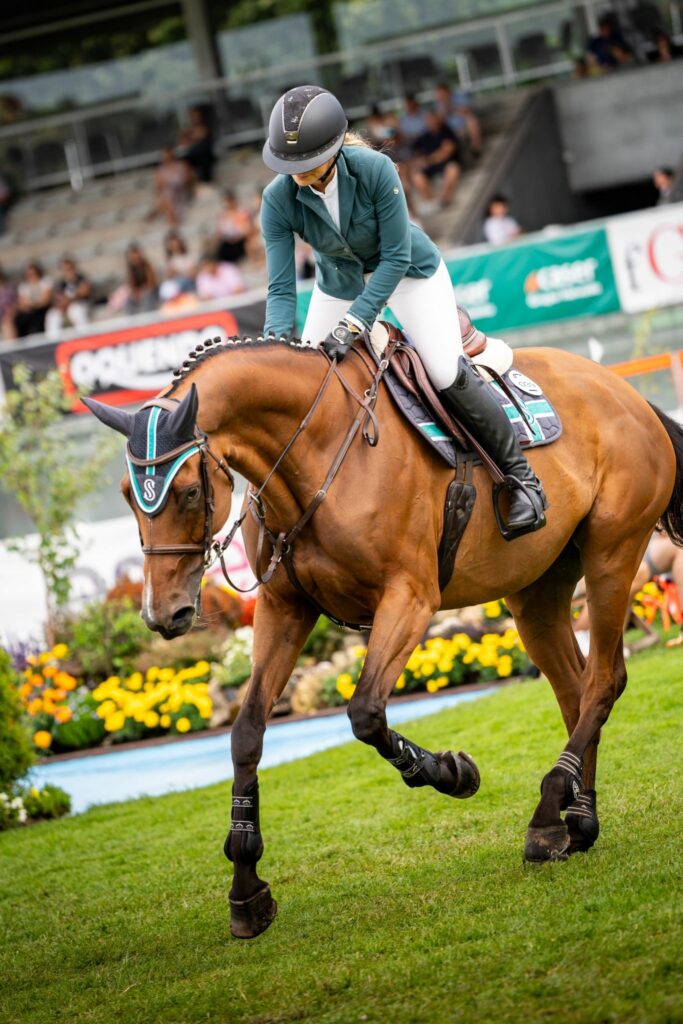
Equestrian sports, particularly showjumping, have long been steeped in tradition. Riders, especially young athletes, historically followed a well-established path: starting from local competitions, progressing through regional levels, and, if fortunate enough, landing opportunities to train with elite coaches and compete at international venues.
However, the accessibility and scalability of this model have been limited. Today, showjumping faces increasing pressure to evolve due to several factors, including rising competition, technological advancements, and shifting cultural expectations. Our Talent Team Program is a pioneering model disrupting the conventional approach to rider education and development.
Traditional Showjumping Education: The Challenge of Limited Access
Traditionally, showjumping education was reserved for those with the financial resources and the right geographic proximity to top-tier training facilities. Many riders struggled to gain access to world-class coaching, modern equipment, and consistent competition exposure. As a result, potential talents often remained untapped due to financial or logistical barriers.
Moreover, much of the training in showjumping has focused on the horse's development, leaving riders with fewer structured opportunities to develop their own physical, mental, and strategic capabilities. This imbalance is critical because successful showjumping relies on the horse-rider connection, precision, and agility, with both entities functioning as one unit on the field
Disrupting the Model: The Talent Team Program
Bridl x Scuderia 1918's Talent Team Program is revolutionizing how show-jumping riders are educated and developed. Partnering with Scuderia 1918, one of the most prestigious equestrian teams globally, Bridl has created a model that provides young riders access to advanced training methods, expert mentorship, and cutting-edge technology, all without the traditional geographic and financial barriers.
Global Accessibility: The program enables riders from diverse regions, such as Spain's Carolina Villanueva Suarez, to train in Italy alongside world-class equestrians. This flexibility removes one of the sport's historical barriers—location—by offering talented riders access to top-tier resources.
Advanced Training and Innovation: Utilizing the latest in equestrian science, biomechanics, and technology, the Talent Team Program focuses not just on the horse but also rider biomechanics, performance optimization, and mental resilience. Riders receive tailored guidance on everything from nutrition to strategic decision-making under competitive pressure, which is key to excelling in modern, high-stakes showjumping.
Mentorship and Career Development: Beyond physical training, the program also emphasizes long-term career development for young riders. Under the guidance of top coaches and professional mentors, participants learn how to navigate the complex world of professional equestrian sports, from sponsorship negotiations to managing a competitive career over decades.
A Proven Pathway to Success: The program’s effectiveness is best demonstrated through the success stories it has produced. Carolina Villanueva Suarez’s journey exemplifies how our model provides young talents with the skills and exposure needed to join elite teams like Scuderia 1918, breaking into the highest levels of international competition.
The Larger Impact on Equestrian Sports
This shift in talent development is disrupting not just how riders are trained but also how the sport is perceived globally. In many ways, BRIDL’s approach mirrors the transformations seen in other sports, which have embraced new formats to engage wider audiences and cultivate new talent pools
The results are promising: by democratizing access to elite resources, this model is helping diversify the sport and expanding the talent pool to include riders who previously might have been overlooked due to geographic or financial limitations. Moreover, by introducing structured mentorship and a focus on professional career development, this model ensures that riders are not just competitive athletes but also well-rounded professionals capable of sustaining long-term careers.
Conclusion: A New Era for Showjumping Education
In an industry long driven by tradition, the Talent Team Program represents a forward-thinking approach to showjumping education. By breaking down geographic and financial barriers, introducing advanced technology, and emphasizing mentorship and long-term career development, we are helping usher in a new era for equestrian sports.
The program not only identifies and nurtures talent but also reshapes the way we think about the relationship between rider education and long-term success. As more consider this vision, the global landscape of showjumping will continue to evolve, opening doors for more riders and elevating the sport as a whole.
The future of showjumping is here, and we're leading the charge to ensure that no rider is left behind in the pursuit of excellence.
